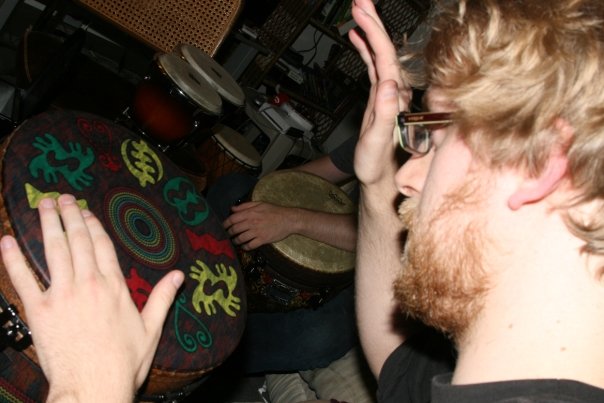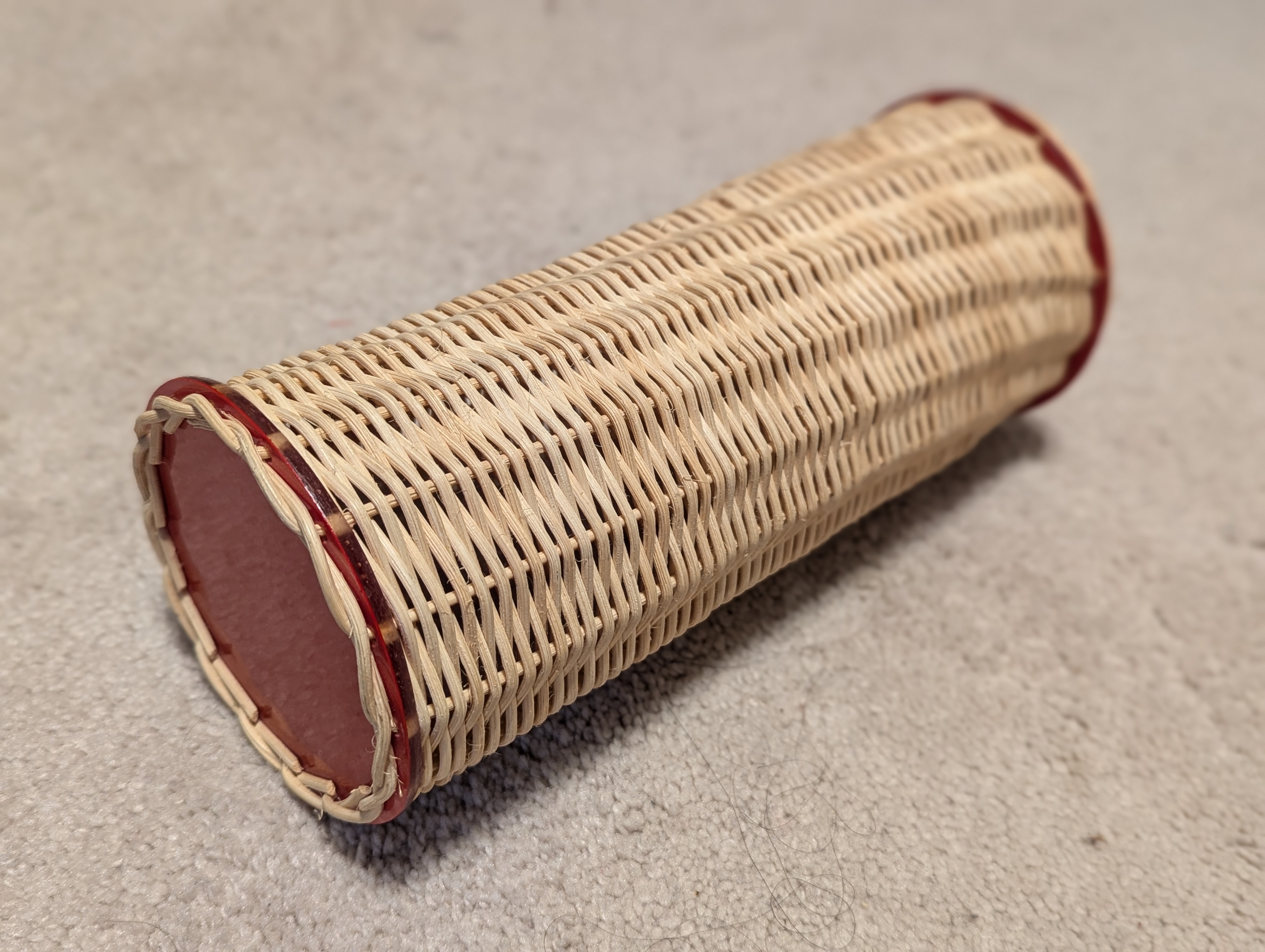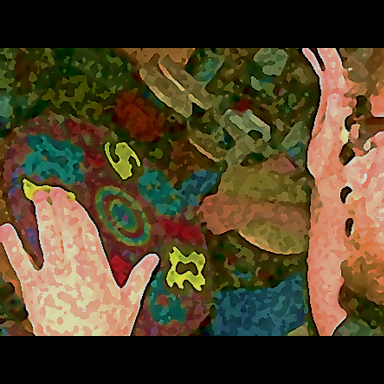Tips for New Facilitators
Drum Circles
I cofounded a secular drum circle named Chicago Suburban Drum Circle and was a recurring facilitator for a couple years. It was open to all races, religions, ages, and able-ness, and typically had less than 25 attendees.
My favorite memory of it was glow-stick-infused evening blowout aboard The Tall Ship Windy at Navy Pier in Chicago.
This guide is to give new facilitators food for thought on the goals, value, and tactics of drum circle facilitating.
Goals
The prime goal of any drum circle ought to be to produce a sense of unity among its members.
The type of drum circles I have experience in are improvised, and non-performative. Meaning they were not intended as a show for an audience, and anyone attending could participate.
Thus, the activity is more an experience than a performance. But some pitfalls of performance do exist such as inhibition for newcomers. Facilitators of CSDC always made sure that sounding good was NOT the number one target. If you have skills, great! If not, that's ok too.
I will not dismiss spiritual goals inherent to many drum circles that might be performed in shamanic, Indigenous American, traditional African cultural contexts, or any ritual practice derived from anywhere else in the world. But it happens that the circle I cofounded and hosted did not have these goals, so I cannot speak to those aspects with authenticity.
Value
Drum circles bring immediate and long term value for participants, such as:
- Feeling of unity
- Entertainment
- Socializing
- Breaking down inhibitions
- Building self confidence
- Endorphin release and stress release
- Meditative experiences
- Safe free public activity
- Cross cultural exposure
- Developing a skill (rhythm, timing, coordination), especially for newcomers and children
- Maintaining fitness (exercise, movement, lifting objects), especially for elderly or differently abled
Facilitation Tactics
General approach taken at each circle I facilitated:
- Welcome and gather attendees before starting.
- Discuss drum sharing etiquette like whether metal rings are ok, where to place drums if participants are willing to share what they brought, and not hogging specific shared drums for too long, and which drums are "no-sticks", etc.
- Encourage the group to be experimental and take risks.
- Describe how the hand signals will be used for conducting the beat.
- Confirm the expected duration of the day's event.
- Very brief tutorial and tips for rhythm building.
Hand Signals
General approach taken at each circle I facilitated, which partially 'conducted' and partially 'unconducted'. Conducted meaning the facilitator is standing in the middle directing and influencing how the group is playing. Facilitator gestures (most are only used if the group is capable and willing):
- Arms Crossed Above Head - This means the group must stop, likely because there is a safety reason.
- Palms Up and Moving Hands Up - Gradually increase volume or intensity.
- Palms Down and Moving Hands Down - Gradually decrease volume or intensity.
- Rolling Hands Over Hands - Hold the beat.
- Hands Squeezing Like An Accordion - Speed up the beat.
- Hands Stretching Like An Accordion - Slow down the beat.
- Pointing With One Hand And Nodding - If you feel confident and nod back facilitator will quiet everyone else so you can solo over it in a few bars.
- Arms At Angles Like Clock Hands - The next gestures apply to your 'section'
Technique

A newcomer may benefit from a quick explanation of types of hits on a djembe or other drum. This takes three minutes at most. The Facilitator can demonstrate the following and have the group try a few hits with them a couple times.
- Posture - In order for a drum to ring out, it needs to be comfortably balanced and the sound hole needs to be able to vibrate. It should be slightly tipped and either held between the upper legs or resting on a leg. Sometimes crossing legs a little underneath the bottom is easier for people.
- Slap - Bring the hand down on the drum head with all fingers more or less together and relaxed, but try to make it so all fingers and the pads where they meet the head at the same time on a spot just off center from the middle of the drum head.
- Thump - Similar to slap but you want there to be a little less contact from your fingers, and contact should land right in the center to make the deep thump.
- Tap - Just the top half of the fingers, or even just the finger pads (no nails), this will make a smaller sound that slaps.
- Flam - The hardest one for newcomers. This is getting the drum to ring out by hitting the ring at an angle. The hand should strike it in a way that is kind of between a slap and a tap.
- Side taps - Like a slap or tap but on the sides of the instrument instead of the head.
- Muting - Place the soft part of the palm of the opposite hand on the drum head before the strike happens. This will change the sound of the slap, thump, or tap.
- Common Sense - Any of this might hurt a little if you are new, but if it is hurting consider stopping or changing what you are doing, because you might be hitting it too hard and can injure yourself or damage the drum.
Building Rhythms
The most effective way to introduce beat making to a newcomer that I've found is to use the 'Mississippi Hot Dog' approach.
This is done by explaining how you can say Mississippi or Hot Dog at different speeds to yourself as you drum, and it will lead you into using different rhythms that are actually whole, half, quarter, or sixteenth notes of the bars being played.
For example, try six thumps and four slaps like:
HOT..DOG..HOT..DOG..HOT..DOG..MISSISSIPPIOr the next main beat might have some dynamics:
HOT..dog..HOT.......HOT.......MISSissippiOr maybe just:
HOT.................DOG..................Newcomers could then improvise their own variations after a little help understanding how to decipher the main 'heartbeat' first.
When to Restart the Beat
It was very helpful to have at least one other person with a strong rhythm who could keep the "heartbeat" going, but it is important to not lock any one person into a role that they don't want to be in.
I've had some drum circles where the beat was only restarted once or twice, we just keep it going. And usually, it is best to not get in the way. Less is more.
When things could use a change up, the best ways are to either guide the beat to a quiet close with hand signals, or have the "heartbeat" drummer reduce volume in volume / slow tempo. Or guide the group into a more climactic end with a buildup of intensity and then a countdown with hand signals.
A reason you might change things up is if people are unresponsive, shy, or confused or your gut just says it is time.
Call and Response
Sometimes this occurs naturally but it can be introduced by the facilitator to spice things up. The first way is to have a strong player play a small rhythm over the beat and have a section of the group try to repeat it. With newcomers it is easier to do this with a little explanation before the beat starts.
Chances are, by the time you've demonstrated technique, participants have already tried to mimic you and 'get it' when the time comes. Encourage participants to listen for others who might put out a 'call'. And the response can be a different rhythm or a matching rhythm.
Sometimes it is easiest to pull this off using voice over the top of the beat. If you've cultivated some call and response in previous drum circles, routine attendees might know to respond in kind already.
If you have two people that are showing some comfort with solo attention, you can make it obvious with body language and the hand signals that something is about to happen.
Identify the two people and gesture when it is their turn. Leave about 4 bars in between. Then it's the other person's turn. A little conduction of the volume of the rest of the participants goes a long way here.
This is easier to pull off if you ask if anyone would like to be volunteers in the next beat "who here is feeling it! who is feeling confident?!" Get some hands raised before the beat even begins.
Again, this all depends on the facilitator discerning the comfort level of the group.
Pass the Beat
This is best played with about 5 to 10 people. This activity needs explanation before starting. Only do it if all participants are feeling good and confident. The beat starts with one person.
Then the person on their left plays along and adds to it. Now there are two people playing.
Then the person on that other person's left plays along and adds to it. Now there are three people playing.
Then the fourth person starts, and the first person stops.
Then the fifth person starts, and the second person stops.
See if you can keep the beat going (and changing) all the way around the circle twice. Then yell "everybody!" and throw hands up so that everyone joins in.
Keeping it Fresh
As the facilitator or as the heartbeat drummer, if you are starting a new beat and the last one was in 4 beats per measure, try one in 3 next (or 6 or 12). Emphasize the 1 instead of the 2, etc.
Supplies
Chicago Suburban Drum Circle started with a just few djembes, egg shakers, and a tambourine, and over time it increased to:
- Djembes (Roped natural heads and/or synthetic)
- Congas
- Bongos
- Doumbeks
- Tablas
- Egg Shakers
- Tambourines
- Empty water cooler jugs that you could use drumsticks on
- Buckets and aluminum trash can
- 16 inch floor tom from a drum kit
- Thunder tubes
- Rain sticks
- Finger cymbals
- Jingle bells
- Frog scrapers
- Triangles
- Aluminum Trash can (One of my favorites)
- Wood Flutes (not shared but played by the other facilitator)
- Scarves (For Dancing With)
- Cowbells
- Maracas
- Clamshells
- Castinets
- Guiros
- Claves
- Rattan Ganzas (My other favorite)

Rich's Ganza
Lastly
Facilitating is a valuable experience for the facilitator too. It is harder than it looks but teaches confidence in addressing a group, improvising, and maintaining a situational awareness of the emotional state of others.
